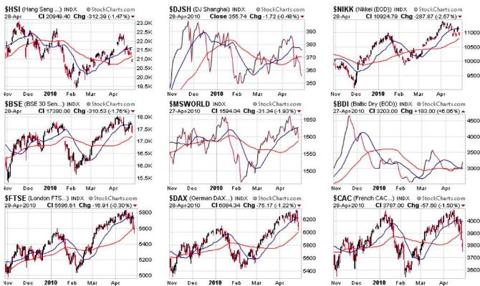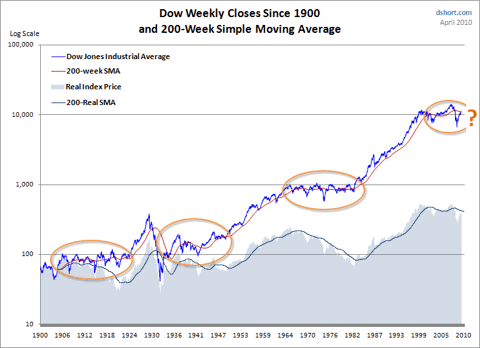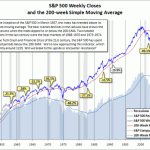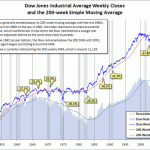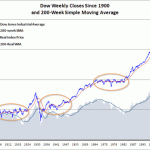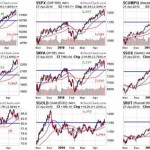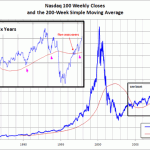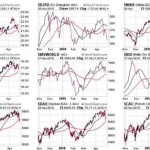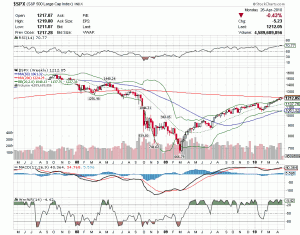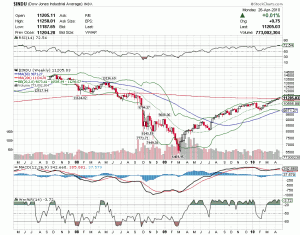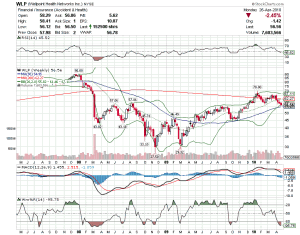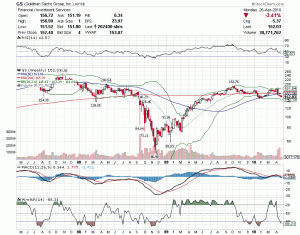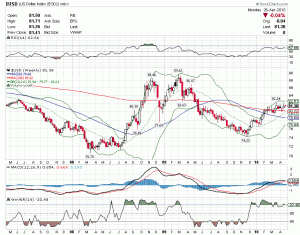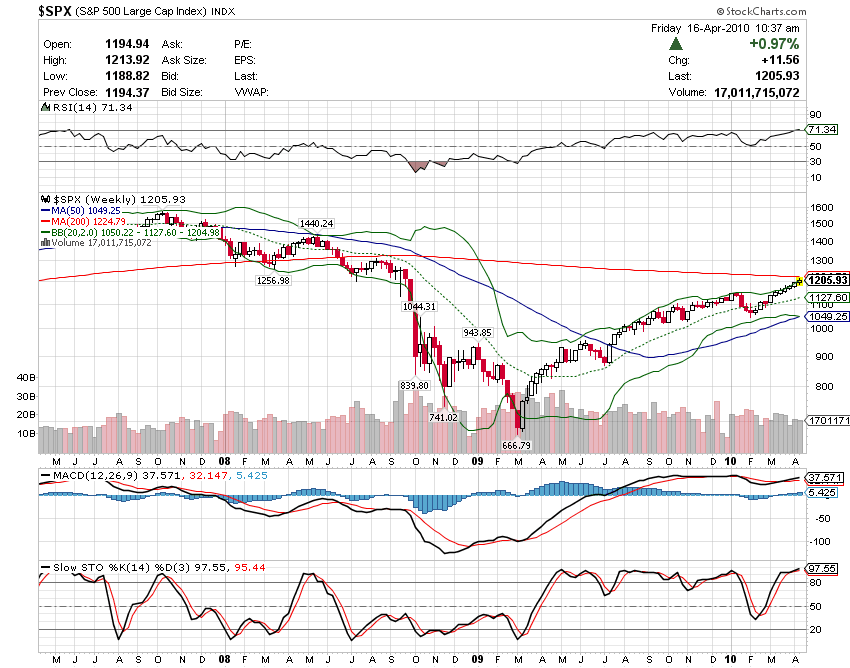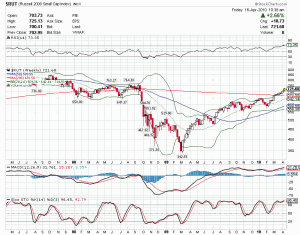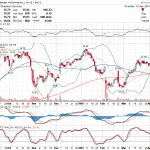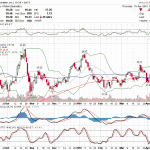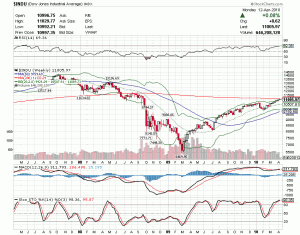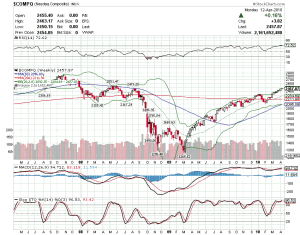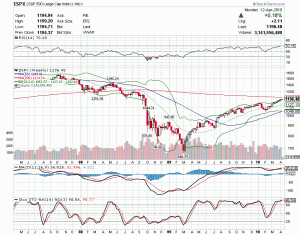Doug Kass’ Predictions For 2010
Hedge fund manager, noted short seller, and financial columnist Doug Kass is out with his annual list of predictions for the impending year. We covered his 2009 predictions at the beginning of last year so it’s always interesting to see his picks.
One third of his surprises came true in 2003, nearly 50% of them were true in 2004, almost 50% were true for 2007, and 60% of his 2008 surprise predictions came true. Notably, Kass also pegged the bottom in this year’s market back in March. However, he didn’t truly capture all of the gains as his hedge fund was up 17% for the year last we heard.
Here are his predictions (surprises) for 2010 and keep in mind that he is ‘swinging for the fences’ here:
1. There is a glaring upside to first-quarter 2010 corporate profits: (up 100% year over year) and first-quarter 2010 GDP (up 4.5%). It grows clear that, owing to continued draconian cost cuts, coupled with a series of positive economic releases and a long list of company profit guidance increases in mid to late January and early February, there is a very large upside to first-quarter GDP (up 4.5%) and, even more important, to S&P profit growth (which doubles!). The upside on both counts is in sharp contrast to more muted growth expectations. While corporate managers, economists and strategists raise earnings per share, full-year growth and S&P target estimates, surprisingly, the U.S. equity market fails to respond positively to the much better growth dynamic, and the S&P 500 remains tightly range-bound (between 1,050 and 1,150) into spring 2010.
2. Housing and jobs fail to revive: An outsized first-quarter 2010 GDP (up 4.5.%) print is achieved despite a still moribund housing market and without any meaningful improvement in the labor market (excluding the increase in census workers) as corporations continue to cut costs and show little commitment to adding permanent employees.
3. The US dollar explodes higher: After dropping by over 40% from 2001 to 2008, the U.S. dollar continued to spiral lower in the last nine months of 2009. Our currency’s recent strength will persist, however, surprising most market participants by continuing to rally into first quarter 2010. In fact, the U.S. dollar will be the strongest major world currency during the first three or four months of the new year.
4. The price of gold topples: Gold’s price plummets to $900 an ounce by the beginning of second quarter 2010. Unhedged, publicly held gold companies report large losses, and the gold sector lies at the bottom of all major sector performers. Hedge fund manager John Paulson abandons his plan to bring a new dedicated gold hedge fund to market.
5. Central banks tighten earlier than expected: China, facing reported inflation approaching 5%, tightens monetary and fiscal policy in March, a month ahead of a Fed tightening of 50 basis points, which, with the benefit of hindsight, is a policy mistake.
6. A Middle East peace is upended due to an attack by Israel on Iran: Israel attacks Iran’s nuclear facilities before midyear. An already comatose U.S. consumer falls back on its heels, retail spending plummets, and the personal savings rate approaches 10%. 7. The first-quarter spike in domestic growth is short-lived as GDP abruptly stalls.
8. Stocks drop by 10% in the first half of next year: In the face of renewed geopolitical tensions and reduced worldwide growth expectations, stocks drop as the threat of an economic double-dip grows. Surprisingly, though, the drop in the major indices is contained, and the U.S. stock market retreats by less than 10% from year-end 2009 levels.
9. Goldman Sachs goes private: Goldman Sachs stock drops back to $125 to $130 a share, within $15 of the warrant exercise price that Warren Buffett received in Berkshire Hathaway’s late 2008 investment in Goldman Sachs. Sick of the unrelenting compensation outcry, government jawboning and associated populist pressures, Warren Buffett teams up with Goldman Sachs to take the investment firm private. The deal is completed by year-end.
10. Second half 2010 GDP growth turns flat: The Goldman Sachs transaction stabilizes the markets, which are stunned by an extended Mideast conflict that continues throughout the summer and into the early fall. While a diplomatic initiative led by the U.S. serves to calm Mideast tensions, flat second-half U.S. GDP growth and a still high 9.5% to 10.0% unemployment rate caps the U.S. stock market’s upside and leads to a very dull second half, during which share prices have virtually flatlined (with surprisingly limited rallies and corrections throughout the entire six-month period). For the full year, the S&P 500 exhibits a 10% decline vs. the general consensus of leading strategists for about a 10% rise in the major indices.
11. Rate-sensitive stocks outperform; metals underperform: Utilities are the best performing sector in the U.S. stock market in 2010; gold stocks are the worst performing group, with consumer discretionary coming in as a close second.
12. Treasury yields fall: The yield of the 10-year U.S. note drops from 4% at the end of the first quarter to under 3% by the summer and ends the year at approximately the same level (3%). Despite the current consensus that higher inflation and interest rates will weigh on the fixed-income markets, bonds surprisingly outperform stocks in 2010. A plethora of specialized domestic and non-U.S. fixed-income exchange-traded funds are introduced throughout the year, setting the stage for a vast speculative top in bond prices, but that is a late 2011 issue.
13. Warren Buffett steps down: Warren Buffett announces that he is handing over the investment reins to a Berkshire outsider and that he plans to also announce his in-house successor as chief operating officer by Berkshire Hathaway annual meeting in 2011.
14. Insider trading charges expand: The SEC alleges, in a broad-ranging sting, the existence of extensive exchange of information that goes well beyond Galleon’s Silicon Valley executive connections. Several well-known long-only mutual funds are implicated in the sting, which reveals that they have consistently received privileged information from some of the largest public companies over the past decade.
15. The SEC launches an assault on mutual fund expenses: The SEC restricts 12b-1 mutual fund fees. In response to the proposal, asset management stocks crater.
16. The SEC restricts short-selling: The SEC announces major short-selling bans after stocks sag in the second quarter.
17. More hedge fund tumult emerges: Two of the most successful hedge fund managers extant announce their retirement and fund closures. One exits based on performance problems, the other based on legal problems.
18. Pandit is out and Cohen is in at Citigroup: Citigroup’s Vikram Pandit is replaced by former Shearson Lehman Brothers Chairman Peter Cohen. Cohen replaces a number of senior Citigroup executives with Ramius Partners colleagues. Sandy Weill rejoins Citigroup as a senior consultant.
19. A weakened Republican party is in disarray: Sarah Palin announces that she has separated from her husband, leaving the Republican party firmly in the hands of former Massachusetts Governor Mitt Romney. An improving economy in early 2010 elevates President Obama’s popularity back to pre-inauguration levels, and, despite the market’s second-quarter decline, the country comes together after the Middle East conflict, producing a tidal wave of populism that moves ever more dramatically in legislation and spirit. With the Democratic tsunami (part deux) revived, the party wins November midterm elections by a landslide.
20. Tiger Woods makes a comeback: Tiger Woods and his wife reconcile in early 2010, and he returns earlier than expected to the PGA Tour. After announcing that his wife is pregnant with their third child, both the PGA Tour’s and Tiger Woods’ popularity rise to record levels, and the golfer signs a series of new commercial contracts that insure him a record $150 million of endorsement income in 2011.
. The New York Yankees are sold to a Jack Welch-led investor group: The Steinbrenner family decides, for estate purposes, to sell the New York Yankees to a group headed by former General Electric Chairman Jack Welch.
